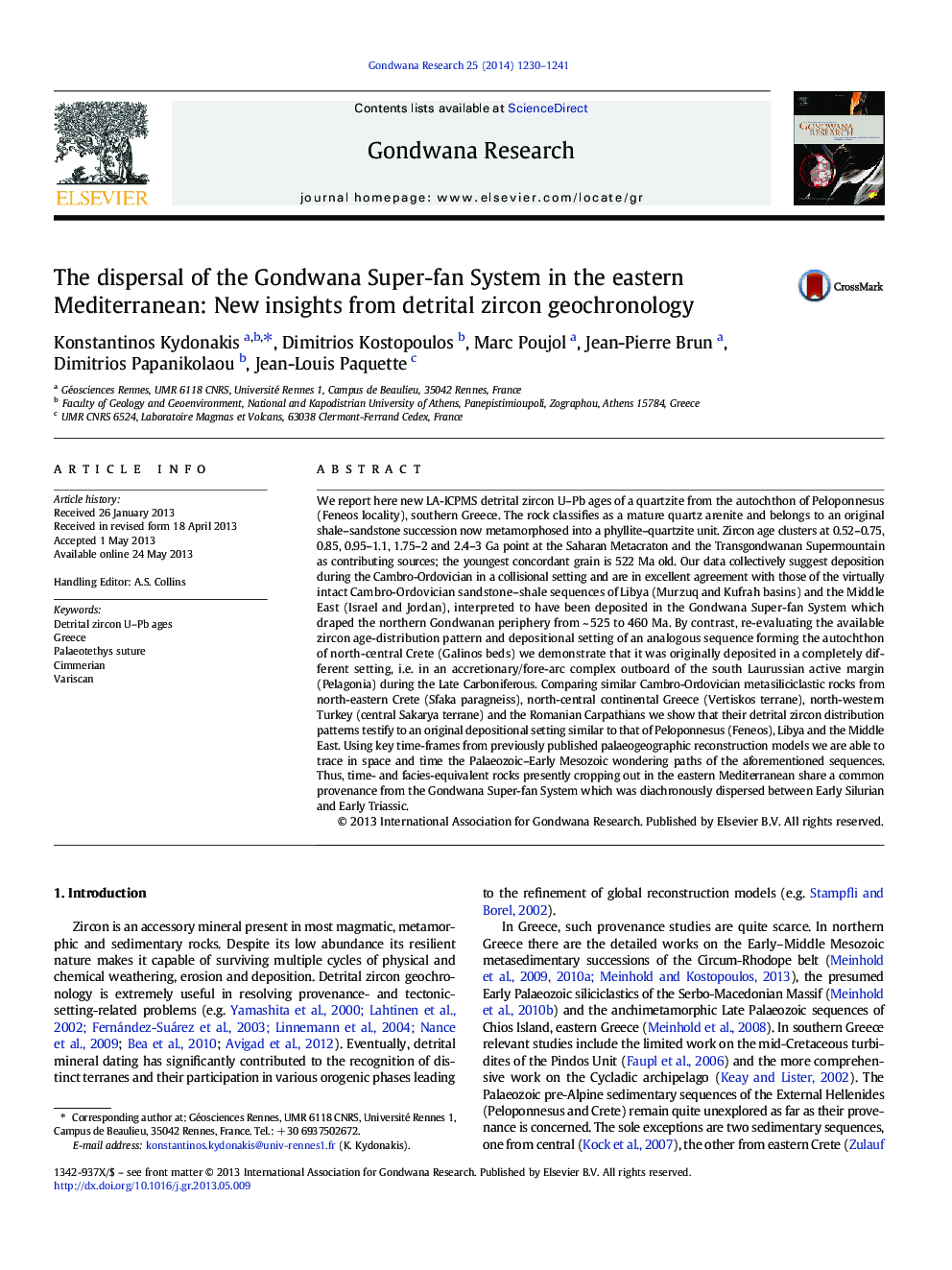| کد مقاله | کد نشریه | سال انتشار | مقاله انگلیسی | نسخه تمام متن |
|---|---|---|---|---|
| 4726986 | 1356355 | 2014 | 12 صفحه PDF | دانلود رایگان |

• We determined detrital zircon ages for a quartzite from the autochthon of Greece.
• The zircon age spectra point to a Gondwanan provenance and deposition during the early Palaeozoic.
• Siliciclastics with similar age spectra crop out in Libya, the Middle East, Turkey and Romania.
We report here new LA-ICPMS detrital zircon U–Pb ages of a quartzite from the autochthon of Peloponnesus (Feneos locality), southern Greece. The rock classifies as a mature quartz arenite and belongs to an original shale–sandstone succession now metamorphosed into a phyllite–quartzite unit. Zircon age clusters at 0.52–0.75, 0.85, 0.95–1.1, 1.75–2 and 2.4–3 Ga point at the Saharan Metacraton and the Transgondwanan Supermountain as contributing sources; the youngest concordant grain is 522 Ma old. Our data collectively suggest deposition during the Cambro-Ordovician in a collisional setting and are in excellent agreement with those of the virtually intact Cambro-Ordovician sandstone–shale sequences of Libya (Murzuq and Kufrah basins) and the Middle East (Israel and Jordan), interpreted to have been deposited in the Gondwana Super-fan System which draped the northern Gondwanan periphery from ~ 525 to 460 Ma. By contrast, re-evaluating the available zircon age-distribution pattern and depositional setting of an analogous sequence forming the autochthon of north-central Crete (Galinos beds) we demonstrate that it was originally deposited in a completely different setting, i.e. in an accretionary/fore-arc complex outboard of the south Laurussian active margin (Pelagonia) during the Late Carboniferous. Comparing similar Cambro-Ordovician metasiliciclastic rocks from north-eastern Crete (Sfaka paragneiss), north-central continental Greece (Vertiskos terrane), north-western Turkey (central Sakarya terrane) and the Romanian Carpathians we show that their detrital zircon distribution patterns testify to an original depositional setting similar to that of Peloponnesus (Feneos), Libya and the Middle East. Using key time-frames from previously published palaeogeographic reconstruction models we are able to trace in space and time the Palaeozoic–Early Mesozoic wondering paths of the aforementioned sequences. Thus, time- and facies-equivalent rocks presently cropping out in the eastern Mediterranean share a common provenance from the Gondwana Super-fan System which was diachronously dispersed between Early Silurian and Early Triassic.
Figure optionsDownload as PowerPoint slide
Journal: Gondwana Research - Volume 25, Issue 3, April 2014, Pages 1230–1241